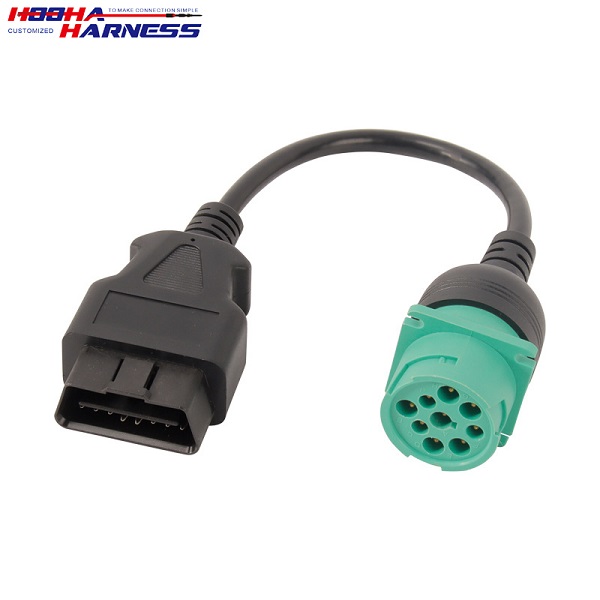OBD (On-Board Diagnostics) cable assembly plays a crucial role in the automotive industry, facilitating various functions such as connecting diagnostic tools, troubleshooting vehicle issues, and transmitting data. This article explores the extensive applications of OBD cable assembly across different sectors within the automotive industry, highlighting its importance in diagnostics, maintenance, and data exchange.

Connecting Diagnostic Tools:
One of the primary applications of OBD Cable assembly is connecting diagnostic tools to vehicles for comprehensive diagnostics and analysis. Diagnostic scanners and testers, equipped with OBD connectors compatible with standard OBD-II ports, use OBD Cable assemblies to establish communication with the vehicle's onboard computer system. This enables technicians to retrieve diagnostic trouble codes (DTCs), monitor vehicle parameters in real-time, and perform system tests to identify and rectify issues related to engine performance, emissions, transmission, and other onboard systems.
Troubleshooting Vehicle Issues:
OBD cable assembly serves as a critical link in the process of troubleshooting and diagnosing vehicle issues. By connecting diagnostic equipment to the OBD-II port, technicians can access valuable diagnostic data stored in the vehicle's electronic control unit (ECU). This data includes information about engine performance, sensor readings, emission levels, and system faults. Using specialized diagnostic software, technicians can interpret this data to pinpoint the root cause of vehicle malfunctions, such as engine misfires, sensor failures, or emission system faults. With the aid of OBD cable assembly, technicians can streamline the troubleshooting process, expedite repairs, and ensure accurate diagnosis of vehicle problems.
Data Transmission:
In addition to diagnostics and troubleshooting, OBD cable assembly facilitates data transmission between vehicles and external devices for various applications. Vehicle telematics systems, equipped with OBD-compatible modules and communication interfaces, utilize OBD cable assembly to establish communication with onboard systems and extract vehicle data. This data may include vehicle speed, mileage, fuel consumption, engine performance metrics, and GPS location information. By harnessing OBD cable assembly, telematics systems enable fleet managers, insurance companies, and vehicle owners to monitor vehicle usage, track driving behavior, and implement preventive maintenance measures to enhance safety and efficiency.
Integration with Aftermarket Accessories:
OBD cable assembly also plays a vital role in integrating aftermarket accessories and devices with vehicle electronics systems. Accessories such as GPS trackers, performance monitors, and in-car entertainment systems often utilize OBD cable assembly to establish communication with the vehicle's OBD-II port. This enables seamless integration and interoperability between aftermarket devices and onboard systems, allowing users to enhance vehicle functionality, track performance metrics, and personalize the driving experience.
In summary, OBD cable assembly serves as a fundamental component in the automotive industry, facilitating diagnostics, maintenance, and data exchange in vehicles. Whether connecting diagnostic tools for troubleshooting, transmitting data for telematics applications, or integrating aftermarket accessories, OBD cable assembly plays a pivotal role in enabling seamless communication between vehicles and external devices. As automotive technology continues to evolve, the importance of OBD cable assembly in supporting diagnostics, maintenance, and connectivity in vehicles remains paramount, ensuring efficient operation and optimal performance across diverse automotive applications.

